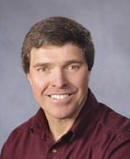 I love to run and I run outdoors all year long, typically averaging three to five miles a day. Although my running is consistent, I always gain a few pounds during the winter months and I always lose a few pounds during the summer months. One reason I trim down in the warm weather is the addition on another aerobic activity that I really enjoy, namely bicycling.
I love to run and I run outdoors all year long, typically averaging three to five miles a day. Although my running is consistent, I always gain a few pounds during the winter months and I always lose a few pounds during the summer months. One reason I trim down in the warm weather is the addition on another aerobic activity that I really enjoy, namely bicycling.
Running and bicycling are complementary exercises that enable me to cross-train for better cardiovascular benefit and lower risk of overuse injuries. Running emphasizes the rear thigh muscles, known as the hamstrings, whereas bicycling emphasizes the front thigh muscles, called the quadriceps. In a similar manner, running uses the calf muscles but does not address the shin muscles, whereas bicycling uses both the calf muscles and the shin muscles when toe clips are incorporated.
Although both running and bicycling are primarily leg muscle activities, cycling also requires some upper body work. To maintain proper biking posture you must activate the muscles of the back, neck, shoulders, chest, arms and forearms, making cycling a more comprehensive conditioning activity.
Some people feel that cycling is a more expensive exercise than running but this may be a misconception. Let's say you purchase a good bicycle, helmet, cycling shorts, cycling shoes and 10 extra inner tubes for $800. After a decade of cycling, your average activity cost is about $80 per year. Regular runners typically wear out two pairs of running shoes a year (running shoes are good for about 500 miles), which costs at least $80 per year. So over a 10-year period, cycling and running have similar monetary requirements, and both are excellent financial investments from a fitness perspective.
Cycling has certain advantages over running, especially during hot weather. High temperatures are less problematic for cyclists than for runners, because the faster cycling speeds provide much more airflow which enhances body cooling. Another physiological advantage of cycling over running is the lack of ground contact and landing forces that can lead to a variety of musculo-skeletal injuries.
From a psychological perspective, cycling allows you to cover about twice the distance as running and to see much more scenery over a given period of time. For example, at eight miles per hour, a 30-minute run would cover about four miles. However, at 16 miles per hour, a 30-minute cycle would cover about eight miles.
Of course, there are some important precautions that cyclists should observe. Cycling is definitely not recommended on busy roadways, during inclement weather or periods of low visibility. Be sure to ride with traffic on the right shoulder of the road, and obey all regulatory signs and signals.
The two most important considerations in cycling are function and comfort. Set your seat so that you knee is just slightly bent in the down-pedal position. Your handlebars should be approximately in line with your seat, but you may make minor adjustments in handlebar height according to personal comfort. As you ride, periodically change your hand position from the lower handlebar to the upper handlebar. Each position uses the upper body muscles differently and reduces both muscle fatigue and wrist/hand stress.
Your cycling session should start with some warm-up activity, such as a set of trunk curls, a few pushups, several knee-bands and some gentle stretches for your hip, back and neck muscles. Use the first three to five minutes of your ride to progressively pick-up the pace until you reach your standard cycling speed.
Reverse this procedure to gradually cool-down at the end of your ride. Reduce your cycling speed for the final three to five minutes, and do a few minutes of stretching exercises for your legs, trunk, shoulders and neck.
To make your ride more interesting and productive try alternating some slower and faster segments. This procedure is called interval training, and enhances the conditioning effects through brief periods of higher effort exercise. For example, during your mid-ride you may alternate two minutes of faster cycling (e.g., 18 mph) with four minutes of slower cycling (e.g., 14 mph) for 12 to 24 minutes.
Keep in mind that cycling is vigorous exercise that requires adequate hydration. Be sure to drink plenty of water, fruit juices or other healthy beverages before riding. It is also advisable to carry water bottles on your bicycle to rehydrate throughout your ride.
If you observe the basic rules of the road and incorporate standard exercise principles, you should have safe, enjoyable and effective cycling experiences.
Wayne L. Westcott, Ph.D., is fitness research director at the South
Shore YMCA in Quincy, MA., and author of 15 books including Strength Training Past 50 and Complete Conditioning for Golf.
©2001 Wayne L. Westcott, Ph.D. all rights reserved